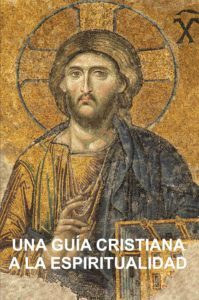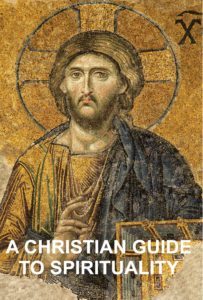Stephen W. Hiemstra's Blog, page 129
February 19, 2021
Urteil
Von Stephen W. Hiemstra
“Von dort wird er kommen, zu richten die Lebenden und die Toten.” Ω
Bist du bereit für deine Finaleprüfung?
Als ich an der Uni unterrichtete, war meine Letzteprüfung nie überraschend. In der Woche vor dem Finale verteilte ich zehn Fragen als Hausaufgabe und gab bekannt, dass fünf dieser Fragen in der Finaleprüfung stehen würden. Nun, das waren keine einfachen Fragen—meine Fragen sollten meine Schüler ermutigen, das Fach zu beherrschen. Meine guten Schüler haben ausnahmslos Antworten auf alle zehn Fragen getippt und sie einfach alle am Tag der Prüfung eingereicht. Meine faulen Schüler tauchten mit leeren Händen auf und waren nicht darauf vorbereitet, die Fragen zu beantworten.
Gottes Urteil funktioniert ein bi𝛽chen wie eine Prüfung zum Mitnehmen. Wir kennen die Fragen aus der Schrift und aus unserer ständigen Beziehung zu Gott und der Kirche. Jesu Gebote und Lehren sind keine Überraschung.
Warum schafft das Urteil ein solches Drama?
Eine Antwort stammt aus einer überraschend Quelle. Immanuel Kant bemerkte, dass ein böser Mensch nicht einer war, der das Böse will, sondern einer, der sich heimlich vom Gericht befreit und vielleicht hofft, dass Gott nicht existiert. Kant spekulierte weiter, dass wahre Gerechtigkeit erfordert, dass unser Leben in seiner Gesamtheit untersucht wird, was nur möglich ist, wenn Auferstehung, ewiges Leben und ein unparteiischer Richter existieren. Gerechtigkeit und Rechenschaftspflicht erfordern daher sowohl ewiges Leben als auch Gott! (Arendt 1992, 17).
Eine andere Antwort ist, dass viele Menschen es vermeiden, Entscheidungen zu treffen, in der Hoffnung, dass sie sich der entziehen können. Hannah Arendt war eine deutsche Jüdin, die nach ihrer Flucht aus den Todeslagern der Nazis vor ihrer Ankunft in Amerika, für das New Yorker Magazin gebeten wurde, über den Adolf-Eichmann-Prozess in Jerusalem (1961) zu berichten. Eichmann war der deutsche Offizier während des Zweiten Weltkriegs, der Adolf Hitlers Programm zur Ausrottung der Juden organisierte, das als “Endlösung” bekannt ist. Arendt nahm am Prozess teil und erwartete, einen hasserfüllten Antisemiten zu sehen, nur um herauszufinden, dass Eichmann eher ein kleiner Bürokrat war, jemand, der nicht in der Lage war, für sich selbst zu denken. Im Fall von Eichmann war das Gesicht des Bösen das eines Menschen, der nicht in der Lage oder nicht bereit war, für sich selbst zu denken (Arendt 1992, 97–101).
Warum interessiert uns die Geschichte von Hannah Arendt? Weil wir einen gerechten Richter im Himmel verehren, der erwartet, dass wir hier auf Erden ein gesundes Urteil benutzen. Wir müssen gute Verwalter der uns anvertrauten Weisheit und Erkenntnis der Wahrheit sein. Nicht zu urteilen ist keine Möglichkeit—robotierisch Denker folgen den Weg des Adolf Eichmann, nicht der Weg Jesu Christus. Wir sind verantwortlich für die Entscheidungen die wir machen und die wir ablehnen zu machen.
So wie sieht Gottes Urteil aus?
Das Bild von Gott als göttlichem Richter erinnert an die Geschichte von König Salomo und den beiden Prostituierten. Beide Frauen hatten Babys, aber als ein Baby starb, stritten sich die Frauen um das lebende Kind. Salomo prüfte die Herzen der Frauen, indem er dem Kind den Tod drohte. Dabei zeigten die Frauen ihre wahren Gefühle für das Kind und er konnte das Kind seiner rechtmäßigen Mutter zurückgeben (1 Kgs 3:16-28).
Genau wie Salomo ist Gott ein leidenschaftlicher Richter, der die Wahrheit verfolgt und sich weigert, Lügen zum Nennwert anzunehmen. Wehe der Person, die solche Tests einlädt! Dies ist vielleicht der Grund, warum das Herrengebet die Petition enthält: “Und führe uns nicht in Versuchung, sondern erlöse uns von dem Bösen.” (Matt 6:13)
Verweise
Arendt, Hannah. 1992. Lectures on Kant’s Political Philosophy. Chicago: University of Chicago Press.
Urteil
Siehe auch:
Einleitung auf Ein Christlicher Leitfaden zur Spiritualität
Andere Möglichkeiten, sich online zu engagieren:
Autoren Seite: http://www.StephenWHiemstra.net
Herausgeber Seite: http://www.T2Pneuma.com
Mitteilungsblatt: https://bit.ly/Valtine_2021
The post Urteil appeared first on T2Pneuma.net.
February 16, 2021
Bell: The Mirror-Moment Transition

James Scott Bell. 2014. Write Your Novel from the Middle. Woodland Hills, CA: Compendium Press.
Review by Stephen W. Hiemstra
Coming from a nonfiction background, one of the hardest concepts to implement in writing fiction is to develop a character arc. How exactly does your character grow through the experiences in your plot and why? This is not just a literary problem—many people wander through life never really confronting their issues and moving beyond them. Thinking about life as a transition with three stages, it is the middle stage when uncertainty and when the willingness to try new ideas reaches a peak. When I found a writing book focused on the character arc in the middle of a novel, it caught my attention.
IntroductionIn his book, Write Your Novel from the Middle, James Scott Bell writes:
“My purpose in this book is to pop the hood and take a look at the engine, and offer you a way to build your own midpoint intentionally, so you truly can write your novel from the middle.” (29)
In the middle, Bell sees a mirror moment when his character realizes that death (physical, professional, or psychological) will be the result of failing to act and confront a weakness. This implies that the stakes are too high to ignore and rising to deal with the problem changes the character internally enabling the strength to meet whatever external challenge. This change is what the book is really about so authors need to focus on the mirror moment to craft compelling stories (28).
The StakesPeople change primarily when they have to. When you find something broken in government administration, there is usually a reason—insufficient information seldom explains the brokenness because smart people are involved. The same logic applies to personal flaws—people are flawed for good reasons, which is why knowing the backstory is important. Consequently, the stakes have to be high enough to make the fix worth the effort.
Bell writes:
“A great novel is the record of how a character fights with death. That’s right, death. Somebody has to be in danger of dying, and that someone is the Lead character … There are three kinds of death: physical, professional, psychological. One or more of these must be present in your novel if it’s going to work at the optimal level.” (8)
Physical death obviously grabs your attention. Professional death makes or breaks your lead character’s career. Psychological death is like the collapse of a romance or something so critical to the lead character that they will never be able to look themselves in the mirror again if they fail. With professional and psychological death, physical death is often lurking in the background (8-11). One way or another, the lead character looks in the mirror and realizes that life will never be the same again if they don’t overcome their flaw and move forward.
The Emotional ContextFor Bell, a novel’s plot focuses primarily on external circumstances while the character’s emotional journey, the internal circumstances, motivate the reader’s willingness to tag along. The structure of this emotional journey he sees outlined in fourteen signpost scenes:
Opening disturbanceCare packageArgument opposed to transformationTrouble brewingDoorway of no return #1Kick in the shinsThe mirror momentPet the dogDoorway of no return #2Mounting forcesLights outQ factorFinal battleTransformation (41-42).The most important of these is the mirror moment because this is where the lead character finds the courage to carry on. Elsewhere he admits that the mirror moment is only part of a formal scene.
Bell describes his signpost scenes in terms of familiar movie scenes and how different styles of writers—pantsers, plotters,or tweeners—would approach the task indifferent genres (44-47). Outlining what Bell means by these signpost scene descriptors is sometimes obvious—e.g. opening disturbance—and more often not. The Q factor, for example, is an allusion to James Bond’s equipment supplier, code named Q, who provides spy gismos that latter help Bond escape some horrible predicament, functioning like a Deus ex machina, to save the day. By providing a Q Factor scene early in the plot, the latter use of the gismo seems less contrived, just part of the spy job description (43).
The Mirror MomentThe mirror moment ties together the pre-story psychology and the ultimate transformation, making the transition believable.
The pre-story psychology focuses a character flaw. This flaw has to be significant and affect both the lead character’s ability to function and be evident to other people. In the film, Lethal Weapon, Riggs is suicidal, which makes him a super cop, but it also scares everyone he comes in contact with. When he finds a reason to live, his mirror moment, he gives up his super power to become a real person.
AssessmentJames Scott Bell’s Write Your Novel from the Middle is a must read for novelists. Using famous movie scenes to outline his points makes Bell an entertaining and memorable read. His focus on the emotional journey of his lead character makes it more obvious what an author needs to accomplish to keep the interest of readers
Also See:Bell, James Scott. 2004. Plot and Structure: Techniques and Exercises for Crafting a Plot that Grips Readers from Start to Finish. Cincinnati: Writer’s Digest Books. (review)
Bell, James Scott. 2008. Revision & Self-Editing: Techniques for Transforming Your First Draft into a Finished Novel. Cincinnati: Writer’s Digest Books. (review).
Bell, James Scott. 2009. The Art of War for Writers: Fiction Writing Strategies, Tactics, and Exercises. Cinninnati: Writers Digest Books (review).
Bell, James Scott. 2014. How to Write Dazzling Dialogue: The Fastest Way to Improve Any Manuscript. Woodland Hills, CA: Compendium Press. (review)
Bell, James Scott. 2015. Super Structure: The Key to Unleashing the Power of Story. Woodland Hills: Compendium Press (review)
Bell, James Scott. 2019. The Last Fifty Pages: The Art and Craft of Unforgettable Endings. Woodland Hills, CA: Compendium Press. (review).
Bell: The Mirror-Moment TransitionBooks, Films, and MinistryOther ways to engage online:Author site: http://www.StephenWHiemstra.netPublisher site: http://www.T2Pneuma.com Newsletter: https://bit.ly/Valtine_2021
The post Bell: The Mirror-Moment Transition appeared first on T2Pneuma.net.
T2Pneuma Monthly Newsletter, February 16, 2021

In honor of Fat Tuesday (Mardi Gras),
I invite you to check out the T2Pneuma Monthly (email) Newsletter, which is available to my dedicated fans.
The newsletter is where I talk about my life as a Christian author and my books.
Check it out by clicking (link). Please subscribe if it interests you.
If you have trouble subscribing, check out my author website (link) , which includes a signup form.
T2Pneuma Monthly Newsletter, February 16, 2021
Also see:
Believer’s Prayer
Other ways to engage online:
Author site: http://www.StephenWHiemstra.net
Purchase Book: http://www.T2Pneuma.com
Newsletter: https://bit.ly/Valtine_2021
The post T2Pneuma Monthly Newsletter, February 16, 2021 appeared first on T2Pneuma.net.
February 15, 2021
Ascension: Monday Monologues (podcast) February 15, 2021
 Ken Burtram Photography
Ken Burtram PhotographyBy Stephen W. Hiemstra
This morning I will share a prayer and reflect on the ascension. After listening, please click here to take a brief listener survey (10 questions).
To listen, click on this link.
Hear the words; Walk the steps; Experience the joy!
Ascension: Monday Monologues (podcast) February 15, 2021
Also see:
Monday Monologue On March 26, 2018
Other ways to engage online:
Author site: http://www.StephenWHiemstra.net,
Publisher site: http://www.T2Pneuma.com.
Newsletter: https://bit.ly/Begone_2021
The post Ascension: Monday Monologues (podcast) February 15, 2021 appeared first on T2Pneuma.net.
February 14, 2021
Prayer Day 13
By Stephen W. Hiemstra
Almighty God.
We praise you for the assurance of your love for us that we have in Jesus Christ.
Following your lead, soften our hearts, sharpen our minds and strengthen our hands for your service.
In the power of your Holy Spirit, empower us to be faithful stewards of the Gospel story.
In Jesus’ precious name, Amen.
Prayer Day 13
Also see:
Believer’s Prayer
Other ways to engage online:
Author site: http://www.StephenWHiemstra.net
Purchase Book: http://www.T2Pneuma.com
Newsletter: https://bit.ly/Begone_2021
The post Prayer Day 13 appeared first on T2Pneuma.net.
Oración Dia 13
Por Stephen W. Hiemstra
Dios Todopoderoso.
Te alabamos por el aseguro de tu ama para nosotros que tenemos en Jesucristo.
Siguiendo tu ejemplo, ablandar nuestros corazones, agudizar nuestras mentes, y fortalecer nuestras manos en tu servicio.
En el poder de tu Espíritu Santo, dar nos el poder a ser siervos fieles de la cuenta evangélica.
En el nombre preciosos de Jesús, Amén.
Oración Dia 13
Ver también:
Prefacio de La Guía Cristiana a la Espiritualidad
Otras formas de participar en línea:
Sitio del autor: http://www.StephenWHiemstra.net
Comprar Libro: http://www.T2Pneuma.com
Boletín informativo: https://bit.ly/Begone_2021
The post Oración Dia 13 appeared first on T2Pneuma.net.
Gebetstag 13
Von Stephen W. Hiemstra
Allmächtiger Gott,
Wir preisen Sie für die Zusicherung deiner Liebe zu uns, die wir in Jesus Christus haben.
Folgend deinem Beispiel, erweiche dir unsere Herzen, schärfe dir unseren Geist und stärke dir unsere Hände für deinen Dienst.
Ermächtige dir uns in der Kraft deines Heiligen Geistes, treue Verwalter der Evangeliumsgeschichte zu sein.
In Jesu kostbarem Namen, Amen.
Gebetstag 13
Siehe auch:
Glaubens Gebet
Andere Möglichkeiten, sich online zu engagieren:
Autoren Seite: http://www.StephenWHiemstra.net
Herausgeber Seite: http://www.T2Pneuma.com
Mitteilungsblatt: https://bit.ly/Begone_2021
The post Gebetstag 13 appeared first on T2Pneuma.net.
February 12, 2021
Ascension
“He ascended to heaven and is seated at the right hand of God the Father almighty.” [1]
By Stephen W. Hiemstra
The ascension is where Jesus commissions the church.
The Gospels of Mark and Luke briefly describe Christ’s ascension. For example, Mark reports the ascension with these words: “So then the Lord Jesus, after he had spoken to them, was taken up into heaven and sat down at the right hand of God.” (Mark 16:19) Luke 24:50 places the ascension near Bethany. The Gospel of Matthew ends, not with the ascension, but with the Great Commission [2] while the Gospel of John focuses more on specific instructions to given to the disciples [3].
The key to understanding the ascension arises in the Book of Acts, which outlines a parallel between Jesus’ work and the work of the disciples. In life on earth and in life after death, Christ is our model.
Just like Christ asserts God’s sovereignty over heaven and hell in his death on the cross, the disciples are commissioned to assert God’s sovereignty over the earth after the ascension. Just before he ascended, Jesus said:
. . . But you will receive power when the Holy Spirit has come upon you, and you will be my witnesses in Jerusalem and in all Judea and Samaria, and to the end of the earth. (Acts 1:8)
This parallel ministry is also discussed in John’s Gospel: “As the Father has sent me, even so I am sending you.” (John 20:21) We see parallel language also in the Lord’s Prayer: “Your kingdom come, your will be done, on earth as it is in heaven.” (Matt 6:10) [4]
Christ’s ascension also includes one of the lighter moments in scripture:
And when he [Jesus] had said these things, as they were looking on, he was lifted up, and a cloud took him out of their sight. And while they were gazing into heaven as he went, behold, two men stood by them in white robes, and said, “Men of Galilee, why do you stand looking into heaven? This Jesus, who was taken up from you into heaven, will come in the same way as you saw him go into heaven.” (Acts 1:9–11)
In other words, Christians are not supposed to leave their heads in the clouds and stare off into space! [5] What seems humorous is actually serious and includes a warning. Disciples who leave their heads in the clouds are warned that Christ will return, which is, perhaps, an allusion to the parable of the talents that includes judgment of slothful servants (Matt 25:14–28).
The ascension links us to Christ’s work in heaven. The Book of Hebrews describes Jesus’ work as a high priest in heaven interceding in prayer for us (Heb 8:1–2). It should come as great comfort that Jesus, who we know, will sit in judgment when we appear before God’s judgment seat [6]. If heaven works like the North Star in our Christian walk, then Christ’s ongoing work in heaven is the heart of that star (Alcorn 2006, xi). And Christ inspires the church’s work here on earth.
Footnotes
[1] The references in this chapter to the Apostle’s Creed are all taken from FACR (2013, Q/A 23). Another translation is found in (PCUSA 1999, 2.1—2.3).
[2] “Go therefore and make disciples of all nations, baptizing them in the name of the Father and of the Son and of the Holy Spirit, teaching them to observe all that I have commanded you. And behold, I am with you always, to the end of the age.” (Matt 28:19–20)
[3] For example: “Jesus said to him [Peter],’ If it is my will that he remain until I come, what is that to you? You follow me!’” (John 21:22)
[4] Also: Luke 24:49, Acts 1:4, and John 14:26. The Great Commission in Matt 28:18–20 also links heaven and earth in evangelism.
[5] C. S. Lewis (2001, 134) observed: “If you read history you will find that the Christians who did most for the present world were just those who thought most of the next.”
[6] As the Apostle Paul told the Athenians: “The times of ignorance God overlooked, but now he commands all people everywhere to repent, because he has fixed a day on which he will judge the world in righteousness by a man whom he has appointed; and of this he has given assurance to all by raising him from the dead.” (Acts 17:30–31)
References
Alcorn, Randy. 2006. 50 Days in Heaven: Reflections that Bring Eternity to Life. Carol Stream, IL: Tyndale House Publishers, Inc.
Faith Alive Christian Resources (FACR). 2013. The Heidelberg Catechism. Cited: 30 August, 2013. Online: https://www.rca.org/sslpage.aspx?pid=372.
Lewis, C. S. 2001. Mere Christianity (Orig Pub 1950). New York: Harper Collins Publishers, Inc.
Presbyterian Church in the United States of America (PC USA). 1999. The Constitution of the Presbyterian Church (U.S.A.)—Part I: Book of Confession. Louisville, KY: Office of the General Assembly.
Ascension
Also see:
Preface to A Christian Guide to Spirituality
Other ways to engage online:
Author site: http://www.StephenWHiemstra.net
Purchase Book: http://www.T2Pneuma.com
Newsletter: https://bit.ly/Begone_2021
The post Ascension appeared first on T2Pneuma.net.
Himmelfahrt
Von Stephen W. Hiemstra
Aufgefahren in den Himmel; er sitzt zur Rechten Gottes, des allmächtigen Vaters. Ω
Bei der Himmelfahrt gibt Jesus die Kirche in Auftrag.
Die Evangelien von Markus und Lukas beschrieben kurz die Himmelfahrt Christus. Zum Beispiel,
Zum Beispiel berichtet Mark die Himmelfahrt mit folgenden Worten: “Nachdem der Herr Jesus mit ihnen geredet hatte, wurde er aufgehoben gen Himmel und setzte sich zur Rechten Gottes.” (Mark 16:19) Lukas 24:50 setzt die Himmelfahrt naher Bethanien. Das Matthäusevangelium endet nicht mit der Himmelfahrt, sondern mit dem Großen Auftrag (Matt 28:19-20), während sich das Johannesevangelium mehr auf spezifische Anweisungen konzentriert, die den Jüngern gegeben werden sollen (e.g. John 21:22).
Der Schlüssel zum Verständnis des Himmelfahrt liegt in der Apostelgeschichte, die eine Parallele zwischen dem Werk Jesu und dem Werk der Jünger umreißt. Im Leben auf Erden und im Leben nach dem Tod ist Christus unser Vorbild.
Eben wie Christus behaupt die Souveränität Gottes über Himmel und Hölle in seinem Tod am Kreuz, sind die Jüngern beauftragt, nach der Himmelfahrt die Souvanenetät Gottes über die Erde zu behaupten. Kurz bevor er fahrt nach dem Himmel, sagte Jesus: “aber ihr werdet die Kraft des Heiligen Geistes empfangen, der auf euch kommen wird, und werdet meine Zeugen sein in Jerusalem und in ganz Judäa und Samarien und bis an das Ende der Erde.” (Acts 1:8) Dieser parallele Ministerium wird auch im Johannesevangelium erörtert: “Wie mich der Vater gesandt hat, so sende ich euch.” (John 20:21) Parallelsprache sehen wir auch im Herrngebet: “Dein Reich komme. Dein Wille geschehe wie im Himmel so auf Erden.” (Matt 6:10)
Die Himmelfahrt Christi beinhaltet auch einen der lustigeren Momente in der Schrift:
Und als er [Jesus] das gesagt hatte, wurde er vor ihren Augen emporgehoben, und eine Wolke nahm ihn auf, weg vor ihren Augen. Und als sie ihm nachsahen, wie er gen Himmel fuhr, siehe, da standen bei ihnen zwei Männer in weißen Gewändern. Die sagten: Ihr Männer von Galiläa, was steht ihr da und seht gen Himmel? Dieser Jesus, der von euch weg gen Himmel aufgenommen wurde, wird so wiederkommen, wie ihr ihn habt gen Himmel fahren sehen. (Acts 1:9-11)
Mit anderen Worten, Christen dürfen ihren Kopf nicht in den Wolken lassen und in den Weltraum starren! (Lewis 2001, 134)
Was humorvoll erscheint, ist eigentlich ernst und beinhaltet eine Warnung. Jünger, die ihre Köpfe in den Wolken lassen, werden gewarnt, dass Christus zurückkehren wird, was vielleicht eine Anspielung auf das Gleichnis von den Talenten ist, das das Urteil über träge Diener einschließt (Matt 25:14–28).
Die Himmelfahrt verbindet uns mit dem Werk Christi im Himmel. Das Buch der Hebräer beschreibt das Werk Jesu als Hohepriester im Himmel, der für uns betet (Heb 8:1-2). Es sollte ein großer Trost sein, dass Jesus, den wir kennen, im Gericht sitzt, wenn wir vor Gottes Richterstuhl erscheinen (Acts 17:30-31). Wenn der Himmel auf unserem christlichen Weg wie der Nordstern wirkt, dann ist das fortwährende Wirken Christi im Himmel das Herz dieses Sterns (Alcorn 2006, xi). Und Christus inspiriert die Arbeit der Kirche hier auf Erden.
Verweise
Alcorn, Randy. 2006. 50 Days in Heaven: Reflections that Bring Eternity to Life. Carol Stream, IL: Tyndale House Publishers, Inc.
Lewis, C. S. 2001. Mere Christianity (Orig Pub 1950). New York: Harper Collins Publishers, Inc.
Himmelfahrt
Siehe auch:
Einleitung auf Ein Christlicher Leitfaden zur Spiritualität
Andere Möglichkeiten, sich online zu engagieren:
Autoren Seite: http://www.StephenWHiemstra.net
Herausgeber Seite: http://www.T2Pneuma.com
Mitteilungsblatt: https://bit.ly/Begone_2021
The post Himmelfahrt appeared first on T2Pneuma.net.
February 9, 2021
Huff Thrills Christians

Andrew Huff. 2019. A Cross to Kill. Grand Rapids: Kregel Publications.
Review by Stephen W. Hiemstra
As a nonfiction author my education as a fiction writer has often been tedious. When I asked how one picks a genre to write, the typical answer is to write what you read. When I asked how one learns the rules to follow in a particular genre, the typical answer is to read more. Ugh! A more complete answer might be that genre are defined by the demographics of their readership and the rules are defined by fantasies of that readership. Basically, readers want to see characters that look like them and plotlines that reflect their own challenges and temptations.
Outline of the PlotAndrew Huff’s novel, A Cross to Kill, is a Christian thriller. Central Intelligence Agency (CIA) contractor, John Cross, rescues a journalist, Christine Elizabeth Lewis, in Jordan who is held captive by the Alliance of Islamic Military (CIA) just as she is about to be beheaded livestream.
Cross is a contractor who undertakes nonlethal covert operations because when he became a Christian he could no longer undertake covert operations involving assassination, as he had previously. Between assignments, he has become a Baptist pastor and tries to live a quiet life in Mechanicsburg, Virginia.
After the Lewis rescue nearly turns lethal, he decides to give up the covert work and simply live a quiet life, but he can’t help thinking about her. Then, one day she shows up for Sunday morning worship at his church to thank him and they become acquainted. Things get complicated that evening after Cross gets ambushed by a Turkish hit squad that followed her to town to settle old scores before moving on to bigger and badder things.
BackgroundA Cross to Kill is the first novel in Huff’s Shepherd Suspense series from Kregel Publication. Huff is both a novelist and a screenwriter as well as a pastor. He lives in North Texas with his wife and two boys. Huff graduated with a Bachelor of Science in Religion from Liberty University and with a Master of Arts in Christian Education from Dallas Theological Seminary.
AssessmentAndrew Huff’s novel, A Cross to Kill, is a page turner that grabs your attention from the first sentence: “Millions of people would witness the murder of Christine Lewis, and not one of them could do anything to stop it.” (7) That is, not anyone but a mysterious Mr. Cross.
This is a book that draws you in and becomes your friend before we learn about Cross’ conversion and the life changes that he makes. I particularly enjoyed the local Virginia and Washington settings. This is good book for young people and those young at heart. If you like action thrillers, it is worth a look.
Footnotes@andrewjohnhuff.
https://www.AndrewHuffBooks.com.
https://familyfiction.com/andrew-huff....
Also See:Nouwen: Make Space for Self, Others, and God Books, Films, and MinistryOther ways to engage online:Author site: http://www.StephenWHiemstra.netPublisher site: http://www.T2Pneuma.com Newsletter: https://bit.ly/Begone_2021The post Huff Thrills Christians appeared first on T2Pneuma.net.







